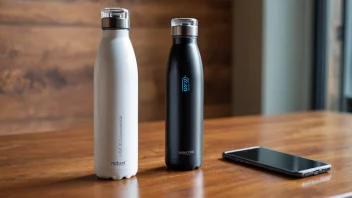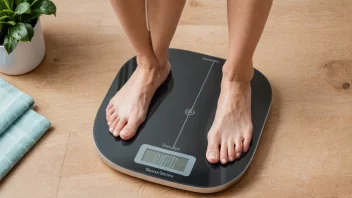As fitness enthusiasts continue to seek innovative ways to enhance performance and achieve personal bests, biofeedback has emerged as a transformative tool in the realm of exercise and training. This technology harnesses real-time data about physiological functions, enabling individuals to make informed adjustments to their workouts. In this article, we will delve into the essence of biofeedback, its applications in fitness, and practical tips on how to integrate it into your training regimen. From heart rate monitoring to muscle engagement, the potential of biofeedback is vast and can significantly impact how we approach our workouts.
Understanding Biofeedback
Biofeedback is a technique that teaches individuals how to control physiological processes by providing real-time feedback on bodily functions. Typically used in clinical settings for rehabilitation, stress management, and pain control, biofeedback is now finding its way into the fitness world. The technology allows athletes and fitness enthusiasts to track metrics such as heart rate, muscle tension, breathing patterns, and even brainwaves.
The Science Behind Biofeedback
At its core, biofeedback operates on the principle that awareness of physiological functions can lead to self-regulation. By using sensors to monitor bodily responses, individuals receive feedback that helps them identify areas for improvement. This feedback loop can enhance performance by promoting better technique, optimal effort levels, and appropriate recovery strategies.
Applications of Biofeedback in Fitness
Biofeedback can be applied in various fitness contexts, from strength training to endurance sports. Here are some of the most common applications:
1. Heart Rate Monitoring
Heart rate is a critical indicator of exercise intensity and cardiovascular health. Using heart rate monitors, athletes can ensure they are training within their target heart rate zones. This data enables them to optimize workout intensity, improve endurance, and prevent overtraining.
2. Muscle Engagement Tracking
Electromyography (EMG) sensors can measure muscle activation levels during workouts. By analyzing muscle engagement, individuals can identify which muscles are being activated during specific exercises, ensuring they are targeting the right areas and avoiding compensation patterns that could lead to injury.
3. Breathing Control
Biofeedback devices that track breathing patterns can help athletes improve their oxygen intake and efficiency during workouts. By learning how to control their breathing, athletes can enhance endurance, manage stress, and improve overall workout performance.
4. Stress and Recovery Monitoring
Biofeedback can also be utilized to manage stress levels and monitor recovery. Devices that measure heart rate variability (HRV) can provide insights into an individual’s recovery state, helping them determine when to push harder and when to take a step back to avoid burnout.
Integrating Biofeedback into Your Workout Routine
Adopting biofeedback technology into your fitness regimen may seem daunting, but with the right approach, it can lead to significant improvements in performance. Here are some practical steps:
1. Choose the Right Biofeedback Device
With a plethora of biofeedback devices available, it’s essential to select one that aligns with your fitness goals. Whether it's a heart rate monitor, an EMG device, or a wearable that tracks HRV, consider your specific needs and preferences.
2. Set Clear Fitness Goals
Define what you aim to achieve with biofeedback. Are you looking to improve endurance, strength, or recovery? Having clear goals will help you focus on the metrics that matter most.
3. Monitor and Analyze Data
Once you start using biofeedback devices, regularly monitor and analyze the data. Look for trends and patterns that could inform your training methods. For example, if your heart rate spikes during a specific exercise, it may indicate the need for adjustments in your technique or intensity.
4. Adjust Your Training Program
Use the insights gained from biofeedback to make informed adjustments to your training program. This could involve modifying exercise selection, adjusting rest periods, or changing workout intensity to better align with your body's signals.
5. Incorporate Professional Guidance
Consider working with a fitness coach or trainer who is knowledgeable about biofeedback. They can provide valuable insights and help you interpret the data effectively, ensuring you make the most of this technology.
Benefits of Using Biofeedback
Incorporating biofeedback into your fitness routine offers numerous benefits:
- Enhanced Performance: By providing real-time data, biofeedback can help athletes and fitness enthusiasts optimize their performance and achieve their goals faster.
- Injury Prevention: Understanding muscle engagement and physiological responses can help identify potential injury risks, allowing for proactive adjustments to technique and training methods.
- Improved Recovery: Monitoring recovery metrics can help individuals avoid overtraining and ensure they are adequately recovering between sessions.
- Increased Motivation: Tracking progress through biofeedback can boost motivation and accountability, making workouts more engaging and rewarding.
Challenges and Considerations
While biofeedback offers significant advantages, there are some challenges and considerations to keep in mind:
1. Device Accuracy
The accuracy of biofeedback devices can vary, and it’s crucial to choose reputable brands and models. Always cross-check data with your personal experiences and adjust accordingly.
2. Information Overload
With the vast amount of data available, it can be easy to become overwhelmed. Focus on a few key metrics that align with your goals to avoid confusion and ensure effective use of the information.
3. Cost
High-quality biofeedback devices can be expensive, and it’s essential to consider your budget when selecting the right tools for your fitness journey.
Conclusion
Biofeedback technology presents an exciting opportunity for men looking to optimize their workouts and enhance their fitness journey. By providing real-time insights into physiological responses, it empowers individuals to make informed decisions about their training, recovery, and overall wellness. As technology continues to evolve, embracing biofeedback can lead to improved performance, injury prevention, and a more engaged fitness experience. By integrating these tools thoughtfully into your routine, you can unlock your full potential and achieve your fitness goals.






